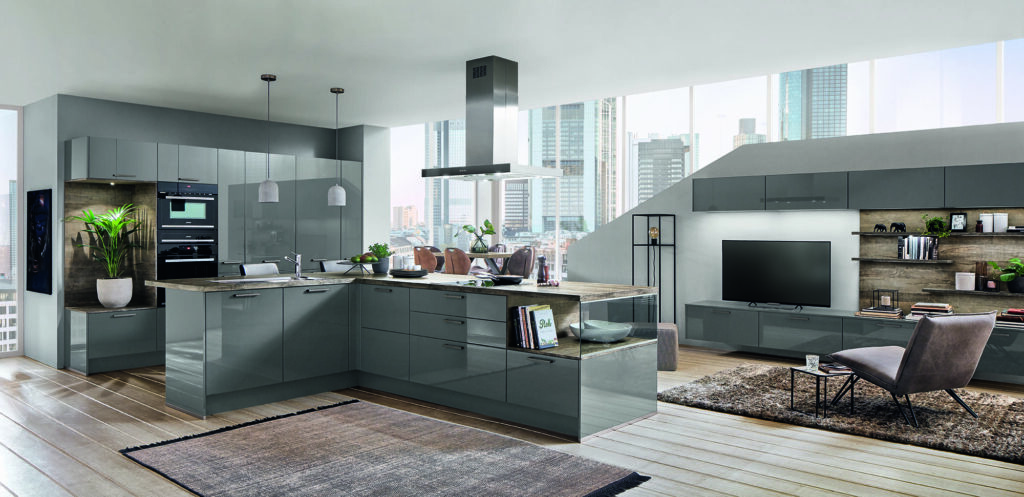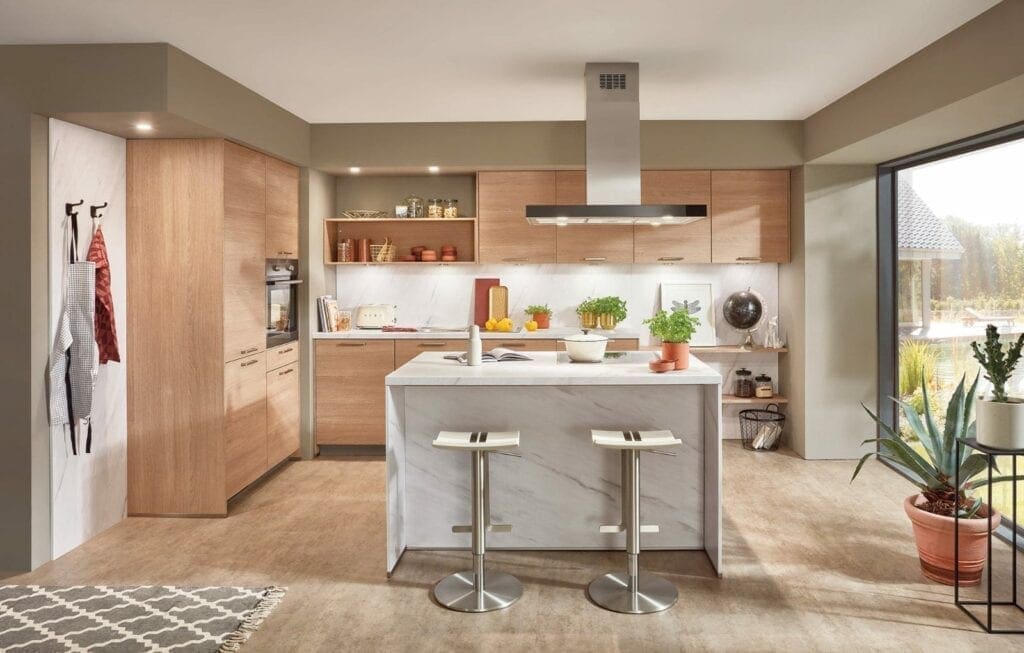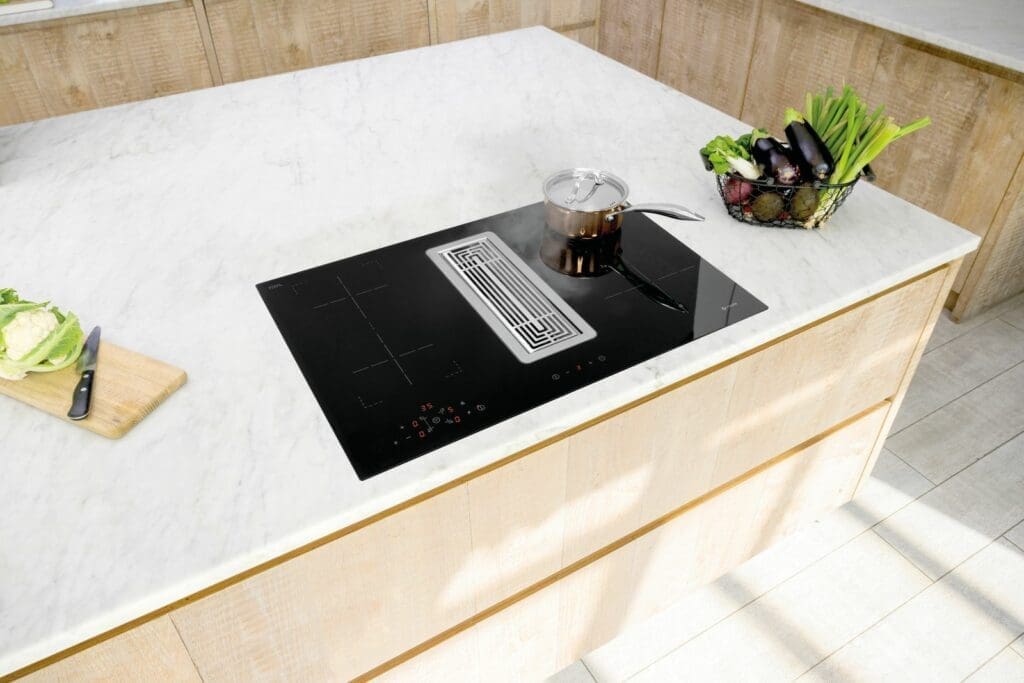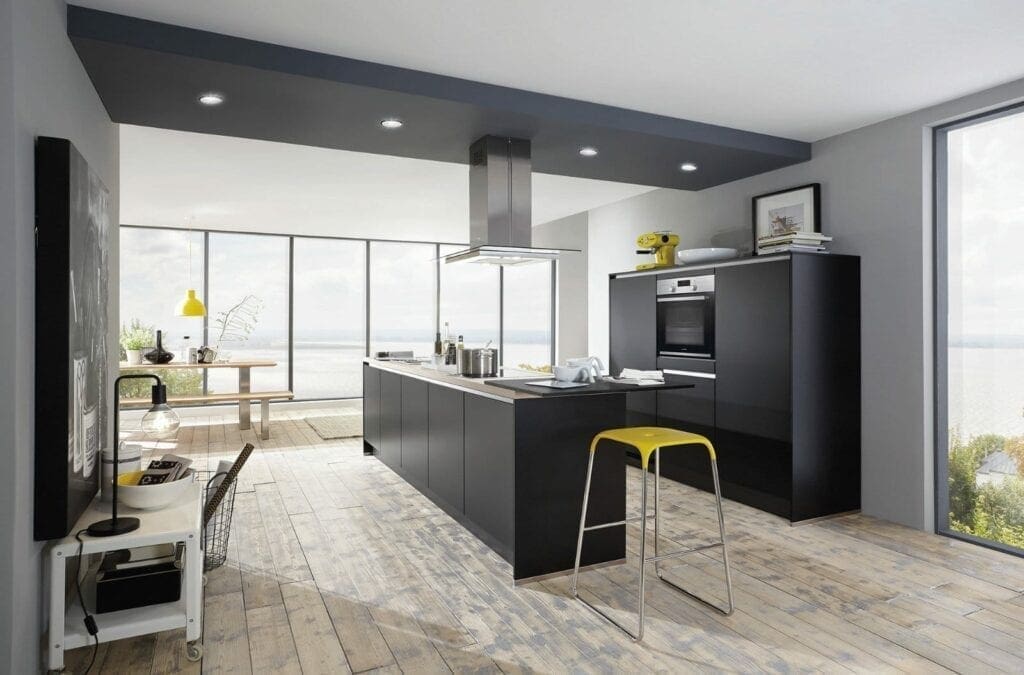The Importance of Kitchen Ventilation: A Comprehensive Guide
Ventilation is an essential component of any kitchen. It contributes to both the safety and comfort of your cooking space. Yet, one of the less glamourous aspects of kitchen design it can be easily overlooked in renovation projects, without the advice of a professional Kitchen Expert. Here, we delve into the importance of kitchen ventilation, its various forms, and how it contributes to a cleaner, healthier and more comfortable kitchen environment.
What is Kitchen Ventilation?
Kitchen ventilation refers to the process of removing or changing the air in any kitchen space to control temperature or remove moisture, odours, smoke, heat, dust, airborne bacteria, or carbon dioxide, and replenish it with outside air. It is particularly essential in a kitchen where cooking processes often result in the production of smoke, steam, and odours.
The importance of ventilation in a kitchen cannot be overstated. It’s not just about preventing your kitchen from being filled with smoke every time you cook; it’s also about creating a safe and healthy environment.


Why is Kitchen Ventilation Important?
- Health and Safety
One of the primary reasons why kitchen ventilation is vital is due to health and safety concerns. Cooking releases a lot of steam and smoke, which can contain harmful pollutants and allergens. Without adequate ventilation, these can accumulate, leading to poor air quality, which can negatively impact health, especially for those with respiratory conditions.
Furthermore, certain cooking processes, such as gas hobs, can produce harmful gases like carbon monoxide. Proper ventilation ensures these gases are quickly removed, preventing potential health hazards. - Comfort and Odour Control
A well-ventilated kitchen can drastically improve comfort. It prevents the build-up of heat and humidity, creating a more comfortable environment to cook in. Moreover, cooking often results in lingering odours, which can permeate your entire home without proper ventilation. A good ventilation system can help control and eliminate these odours, keeping your home smelling fresh. - Prevention of Damage
Steam and smoke produced while cooking can lead to condensation on walls and windows, potentially causing mould and mildew. This not only damages the surfaces but can also lead to health problems. Proper kitchen ventilation prevents the build-up of moisture, thus averting such issues.
The Different Options for Kitchen Ventilation
Now that we understand the significance of kitchen ventilation, let’s discuss the various options available. Your choice of kitchen ventilation depends on a number of variables including your kitchen layout, cooking habits, personal preferences and available budget.
Extractor Fans An extractor fan is a popular choice for many households due to its efficiency and cost-effectiveness. It’s typically installed on a kitchen wall or window and works by drawing out stale air from the kitchen and expelling it outside. Many extractor fans also have a filter to trap grease and other particles.
Cooker Hoods Cooker hoods, also known as range hoods, are another common type of kitchen ventilation. They are installed directly over the cooking area and have a fan and filter to capture and remove smoke, steam, odours, and grease. They come in various designs, from traditional chimney hoods to sleek, modern island hoods, offering both functionality and aesthetic appeal.
Downdraft Extractors Downdraft extractors are a more modern and less noticeable form of kitchen ventilation. They are installed next to or integrated into the hob, and they work by drawing air down and out. This type of extractor is particularly suitable for open-plan kitchens or kitchens where wall space is limited.


Vented Hobs
A vented hob, also known as a downdraft hob, is a type of modern ventilation system that integrates the hob and extractor into a single unit. This design is typically sleek and modern, often used in kitchens where a traditional range hood would not be aesthetically pleasing or practical.
A vented hob works by pulling steam, smoke, and odours downwards rather than upwards. It does this using a powerful built-in extractor fan located beneath the hob. When you start cooking, the fan begins to operate, drawing down the air and expelling it outside the house. This action effectively removes the heat, smoke, and odours generated by cooking. Because the extractor is located directly on the hob, it can capture and extract emissions more effectively and efficiently than traditional hood systems, where smoke and steam may diffuse into the room before being drawn upwards.
Ventilated Ceilings
Ventilated ceilings offer a complete solution for kitchen ventilation. They consist of a ceiling with built-in ventilation and lighting, providing a uniform and efficient extraction of heat, smoke, and odours. While this option is more commonly seen in commercial kitchens, it is increasingly being adopted in residential settings for its efficiency and sleek design.


Heat Recovery Ventilation Systems
A heat recovery ventilation system (HRV) is a more advanced and energy-efficient form of ventilation. It works by extracting the warm air from your kitchen and using it to pre-heat fresh air from outside before circulating it back into the room. This system helps to maintain a comfortable temperature in your kitchen while saving on heating costs.
Ventilation Installation
One thing to note, however, is that some ventilation systems such as vented hobs vented ceilings and heat recover ventilation systems require a relatively complex installation process, and particularly where they need to be connected to a duct that leads outside. This might be a challenge in certain kitchen layouts or in a multi-storey building. It can also make them a more expensive solution. It’s essential to explore and consider such factors when choosing the most suitable kitchen ventilation system for your home.


Conclusion
In conclusion, kitchen ventilation is a crucial aspect of kitchen design that should never be overlooked. It ensures a safe, comfortable, and healthy cooking environment while also helping to prevent potential damage to your kitchen.
From extractor fans to heat recovery ventilation systems, there are many options available to cater to different needs and preferences. The key is to understand your kitchen layout, cooking habits, and requirements to choose the most suitable ventilation system.
Remember, a well-ventilated kitchen isn’t just about comfort—it’s also about maintaining a healthy environment for you and your family. So, whether you’re designing a new kitchen or revamping an existing one, make sure to give kitchen ventilation the attention it deserves.





